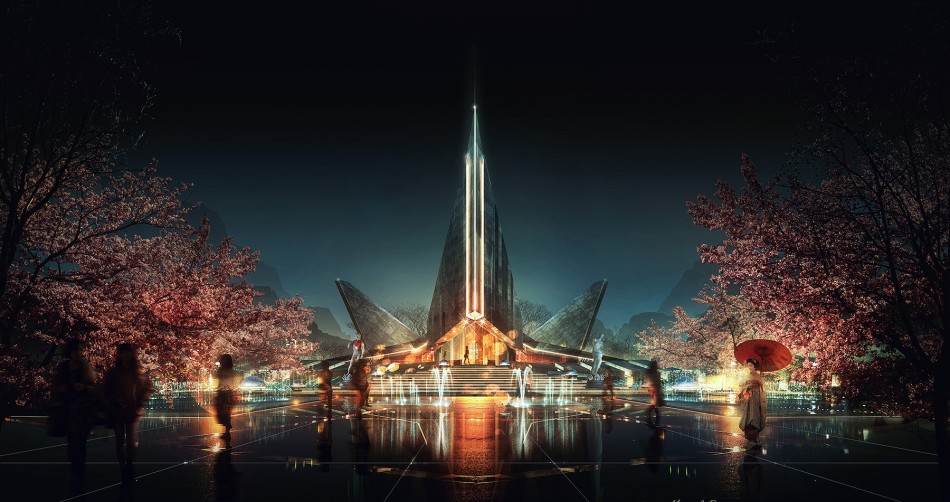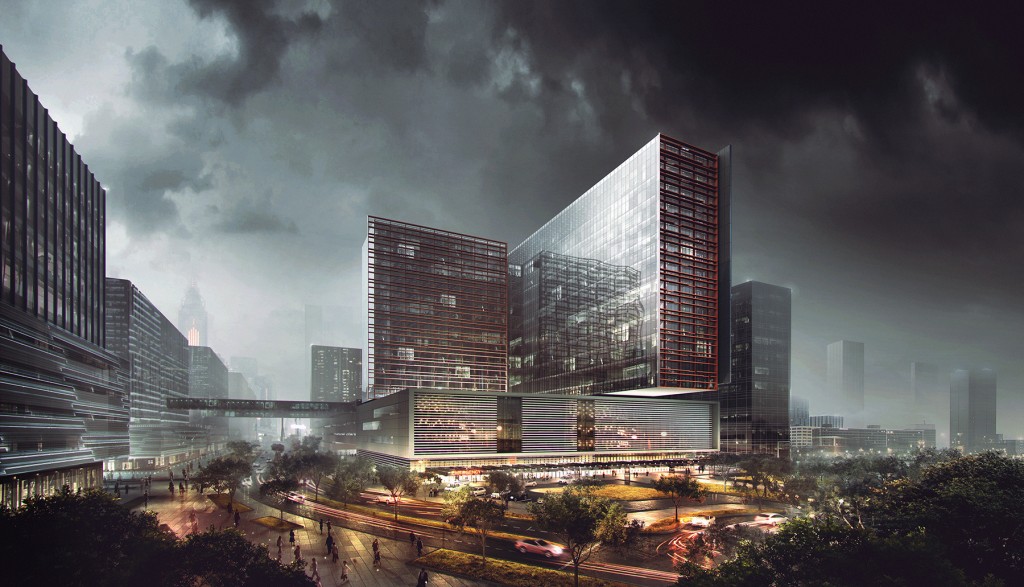Pedro Fernandes is a name in the architectural visualisations industry that hardly needs any lengthy introductions. Together with his studio Arqui9 he has created some of the most emotive and memorable images of inbuilt architecture. In our conversations with the younger generation of artists he is often quoted as one of their major sources of influence and inspiration. Pedro has been a frequent presenter and speaker at all major Archviz events – 3DS London, Sate of Art Academy , End User Event – you name it!
Your motto is “architectural stories through images”. By dictionary definition, a story is an “account of imaginary or real events told for entertainment”. Looking at your work , it seems to me that your work tends to gravitate more towards the imaginary rather than the photo-hyper-real. Are you trying to escape reality?
True, our motto, is stories through images. The power of an image relies in its idea, what it transmits to us, the stimulus it announces to our senses, intellect and the form in which we apprehend it. We all know the power a well told storey holds, and having this in mind we thought that this simple phrase explained what we feel when creating a “storey visualised”.
It’s funny you should mention the photo real and imaginary conception of the image, I don’t want to turn this whole interview into a debate on “philosophical imagery”, but it is interesting that people will often tend to relate to one or the other. These days I couldn’t say we relate specifically to one or the other, initial we fixed ourselves on heavy abstraction and imagery, with much influence from companies such as Vyonyx and Luxigon, then we gravitated towards photo style wise, influenced by photographers and painters.
“Like any other profession we stopped worrying about having the latest and greatest tools and really started focusing on what it means to relate architecture with visuals.”
These days we find comfort in not relating directly to one or the other, we stopped with the constant referencing of works from the internet and really started delving into the substance that is an image and how it is apprehended. Like any other profession we stopped worrying about having the latest and greatest tools and really started focusing on what it means to relate architecture with visuals. Escaping reality is an amazing experience creatively most times easier, but also complicated, as the more you want to escape the harder it gets to create something that is more abstract, original and “fresh”.
So to sum things up, yes and no, it depends on the mood, the location, the scene, the feeling of the day, client and x amount of relevant factors which equate to the creative process.
I would agree that the debate, if it ever truly existed, between, let’s call them, ‘abstractionists’ and ‘hyperrealists’ is over by now. The system has somehow managed to homogenized the differences and had dragged our industry into the realm of over-saturation with detail. But for artists, like yourself, who are developing a strongly distinctive style it must be difficult to build a team of not simply co-workers but as well of followers? We’ve all watched your step by step video tutorials that make your approach seem easy but how do you teach someone the sublime in art?
Indeed it isn’t an easy process, but we are always learning from one another at any level.
It is true that techniques are but a minimal part of the learning process and that the sublime art is a mix of practice and practical analysis. I remember the days in which I worked with Vyonyx and I when I left to go make it “out there” I thought I was in my own mind “a young Jedi, master in the art”, life/profession taught me that was not so.
I experienced a tremendous uprise in my work once I was “out”, inspired by all that was new, but soon found that you can’t make it on inspiration/techniques alone and the production somehow deteriorated.
I started to delve deeper and deeper, created some bad stuff and other a little better, but I always knew that to get somewhere you need to go through a “mistakes” phase, it’s almost a sort of a pit stop in the process, the key is to have mental presence and know that through the errors, somehow somewhere your subconscious will apprehend all the insightfulness of your errors and you will sooner or later experience an automatic connect between brain and body that drive you into a creative frenzy.
In the office – it’s interesting being on the teaching side, we’ve slowly been crafting artisans, but this is something that takes time, everyone has a style and the important part is to nurture that style and simultaneously make it a stronger vision and execution, I guess to a point we then start to input a little of what we do – manner of thinking, executing into an image, can this translate into crafting a style? – maybe. The amazing thing is seeing the artist when they arrive and then when they go off into their own battles, seeing the great work they are producing and selfishly knowing that a little piece of your insight is showing in that work. Insight of which has probably derived from my own previous mentors (you know who you are).








Pingback: Arqui9 Interview featured in Gobotree - Arqui9 VisualisationArqui9 Visualisation